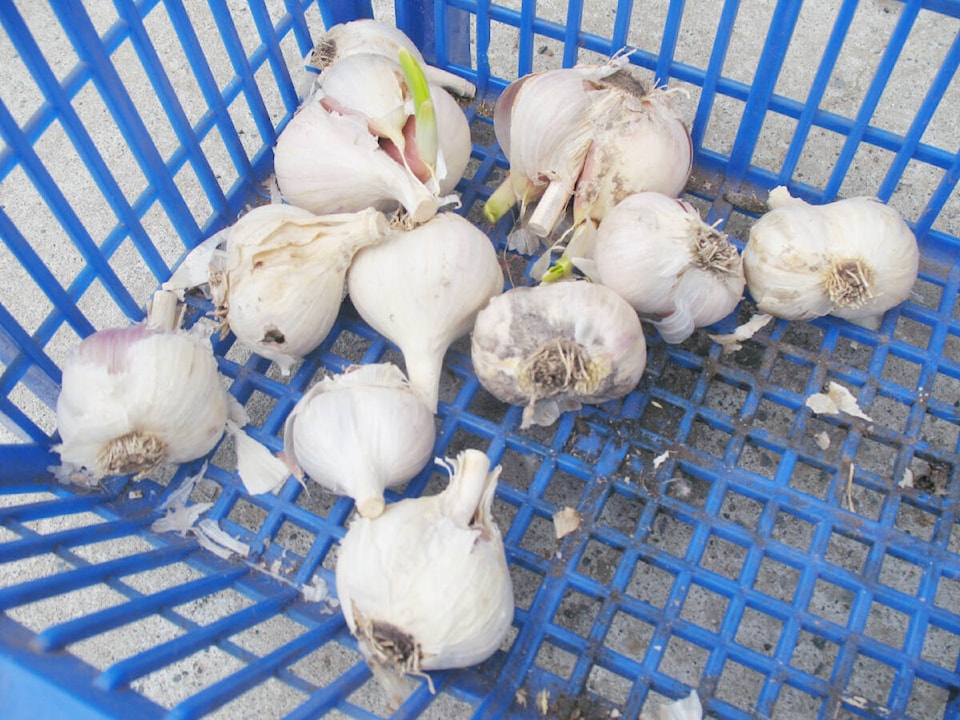By Mary Lowther
I found an article on fermenting garlic in the current issue of Mother Earth News that should interest those of us with extra garlic to preserve. In his excellent book The Art of Fermentation, author Sandor Katz details his experience fermenting all kinds of food to determine that fermenting vegetables is “intrinsically safe.” He quotes microbiologist Fred Breidt from the United States Department of Agriculture: “Vegetable fermentation is one of the oldest and safest technologies we have.”
Katz would argue that fermented vegetables are safer than raw vegetables, since the lactic acid bacteria present on all vegetables takes over during fermentation under water or its own juices and any “incidental pathogenic bacteria could never compete with these acid-producing” populations.
Garlic is used in some fermented Korean dishes called kimchi, or is added to other vegetables in a brine. Katz suggests starting with a five per cent brine solution made by adding 50 grams of salt to a litre of water and dissolving this before adding the vegetables.
Last year I sliced, dried and ground my extra garlic into powder that is easy to sprinkle and takes up little room in a baggie in the freezer. I read that enclosing a small packet of silica gel with the garlic would suck out residual moisture and thus prevent mould, but I have room in the freezer so most of it stays there and some is in a spice vial on the shelf where it’s handy.
Another dandy use for extra garlic comes from a Readers’ Digest book I recently found in a thrift shop entitled 1001 Hints and Tips for Your Garden. They suggest blending a half cup of hot peppers or garlic into two cups of water and spraying this on infested plants. I had extra jalapenos, so I used a quarter cup each of them and garlic, strained the mixture and sprayed it on my poor, chewed up peas. It worked and now my plants have resumed growing! Next year I plan to spray the ground along the row where my peas are sown and repeat on the plants as necessary.
We are advised to harvest garlic before it splits and the outside protective skins break apart, allowing mould to develop within, but last year my garlic matured so quickly that about a third of it split when I harvested them. Surprisingly, they’re still in great shape, apart from a bit of mould here and there that I just cut off. I plan to devote some of this year’s crop to kimchi.
Garlic can also be pickled, alone or with other vegetables. We tried some cucumbers that had been pickled in a jar with a single hot pepper and a half dozen cloves of garlic, and they were so delicious we will try it ourselves. One thing to avoid, however, is chocolate coating. On the theory that garlic and chocolate are both delicious, David once bought a used fondue set and tried it out. Historically, most experiments end in failure, and we often learn more from our mistakes.
Trust him, it is not recommended.
Please contact mary_lowther@yahoo.ca with questions and suggestions since I need all the help I can get.
